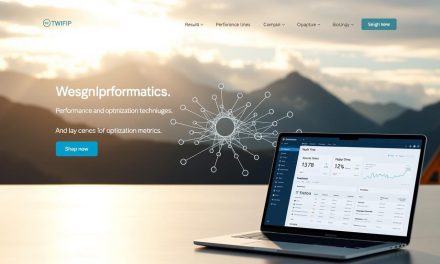Building a reliable network can feel daunting, but it becomes simple when you treat it as friendly conversation. In France, many independents have found that casual meetups and local groups beat cold pitching.
Try different formats: a Sheffield Young Professionals mixer feels different from a Growth Community pitch session, and a Chamber of Commerce event often offers a low-pressure way to meet local business owners. Small chats can turn into paid work—one reconnection led to an email intro and a weekly retainer.
We’ll show how to share what you do with context, ask for small favors, and follow up without the hard sell. The guide focuses on practical strategies for freelancers and professionals in France so your efforts turn into real opportunities and lasting relationships.
Table of Contents
Key Takeaways
- Start with casual events to find what fits your style.
- Frame conversations as simple exchanges about current projects.
- Use Chambers of Commerce and local groups to boost visibility.
- Ask small, specific favors that can lead to paid work.
- Track outcomes so you know which strategies work.
Why networking matters for freelancers in France today
In France today, connecting with peers and clients does more than open doors — it shapes a sustainable career.
Réseautage helps independents fight isolation and reach several goals. You become known for your expertise, boost online visibility, and share practical knowledge with other professionals.
With a clear plan you save time. Define objectives and target profiles so each meeting maps to real business outcomes like contracts or partnerships.
LinkedIn remains central in France. Over 22 million profiles and thousands of daily hires make it a high-leverage place to find opportunities and showcase skills.
- Treat connection work as marketing: pick industries and groups that fit your services.
- Join sector and local groups: they create context for real conversations and collaborations.
- Set simple goals: visibility, clients, or partnerships, then track which events deliver results.
Ask focused questions before you commit time: what outcomes do you want, which industries matter, and which groups are active nearby?
For a practical guide on how missions convert into contracts, see working with clients in France.
| Benefit | What to measure | Quick action |
|---|---|---|
| Visibility | Profile views, post engagement | Post weekly updates and join 2 groups |
| Clients | Intro calls, proposals sent | Schedule one follow-up after events |
| Partnerships | Co-projects started, referrals | Suggest a short collaboration pilot |
Set your networking strategy before you start
Before you show up, define what success looks like for each connection so your efforts pay off. A short plan aligns your actions with results and keeps casual chats from becoming wasted time.

Define clear objectives
Pick one to three concrete objectives: visibility in your industry, two new clients per quarter, or referral partners. Track short-, mid-, and long-term goals so each hour of work advances a measurable outcome.
Choose the right groups
Map communities by sector, location, and shared interests. Prioritize forums where your services match demand and conversations are active. Avoid random contacts; focus on relevance and mutual benefit.
Manage your time
Block fixed slots for outreach and events. Stop open-ended scrolling and use brief, focused sessions to keep networking from becoming a distraction.
Craft a tight message
Prepare a short message that names your services, ideal client, and value. Use a few qualifying questions—who benefits, where they meet, what problems exist—to pick the best forums.
- Start with strategy: set clear goals so every action is measurable.
- Protect your calendar: allocate time and revisit the plan monthly.
- Treat it as marketing: align outreach, profile, and follow-up for a cohesive network.
Freelance networking tips: a step-by-step approach
Start small: good conversations become solid relationships when you lead with curiosity.
Connect as people first. Ask about location, background, or a recent project. Find common ground so follow-ups feel natural.
Share your work with context
Describe active projects and what you learned. Say what you do, who benefits, and one recent result. Short, concrete stories help others see relevant opportunities.
Ask for help the friendly way
After rapport, make clear, small requests: “Could you keep an eye out for roles?” or “Would you mind an email intro?”
Offer value in return and keep it two-way to encourage referrals and ongoing support.
| Step | Action | Example |
|---|---|---|
| Connect | Lead with a human question | “Where do you work in Paris?” |
| Share | Give one project highlight | “I helped X cut time by 20%” |
| Ask | Make a small, specific request | “Can we meet for 30-minute coffee next week?” |
Document each step—connection, share, ask—so you repeat what works. For a deeper guide on building professional links, see building professional relationships.
Where and how to network: events, groups, and social media
Choose channels that convert: local meetups, sector groups, or online communities all have different strengths. Pick a mix so you meet people in person and then continue the conversation online.

In-person options
Tap your Chamber of Commerce and local professional groups to meet people who know the market in your area. These groups often refer clients and share local leads.
Event formats to try
Test casual mixers and structured pitch sessions to see what fits your style. Mixers let conversations breathe. Pitch sessions force clarity and quick value statements.
Online avenues
LinkedIn groups, sector forums, and friendly DMs on social media open fast paths to collaboration. Join a few active groups and contribute useful content regularly.
Optimize LinkedIn for France
Use a strong profile: professional photo, clear headline, concise summary, detailed experience, and recommendations. Post short updates about projects and comment on others’ posts to stay visible to professionals and potential clients.
- Combine channels: meet at an event, then connect online to keep momentum.
- If you are a writer or creator, showcase standout projects with clear outcomes.
- Engage consistently but focus on a small number of groups for real impact.
Follow-up that turns conversations into clients
A clear follow-up habit turns casual chats into real work opportunities. Treat every new connection as the start of a short process that moves from hello to a valuable conversation.
Send timely, personalized follow-up messages that reference your conversation
Send a friendly message within 24–48 hours. Mention the event and one detail you discussed so the person remembers the chat.
“Hey Marie, it was great to meet you at the Chamber event. I enjoyed our chat about local marketing and the small project you mentioned.”
Schedule 1-to-1 meetings to explore services, collaborations, and referrals
Offer two available date options to make scheduling easy. Frame the meeting as a short exploration of how your services could help a client or create referrals.
Bring business cards, share your portfolio, and keep your content up to date
Hand over a card and a scannable link to your portfolio. When materials reflect current work, follow-ups convert into real conversations and leads.
Track results: connections, conversations, opportunities, and booked projects
Log each contact in a simple CRM or spreadsheet. Track new connections, follow-up calls, open opportunities, and booked projects so you see clear results.
- Send a personal note within 24–48 hours and suggest a light next step.
- Propose a short 1-to-1 with two date options to speed scheduling.
- Share a portfolio link and keep your site updated for easy sharing in the group.
- Track outcomes—connections, conversations, opportunities, booked clients—and double down on what works.
- Ask for referrals when appropriate and return favors promptly to build trust.
| Metric | What to log | Quick action |
|---|---|---|
| Connections | Name, event, contact | Send message within 48h |
| Opportunities | Scope, next step | Schedule 1-to-1 with two dates |
| Booked work | Client, value, start date | Confirm and contract |
Sustainable networking habits that fit your work and life
Plan simple habits that protect your time and keep your name visible in the right circles. A short publication plan keeps visibility steady without long hours. Many professionals draft content in advance and schedule a few posts each month.
Create a simple content calendar to maintain visibility without burnout
Build a realistic calendar with one to three content items a month. Quality beats quantity: a useful post is better than daily noise.
Mix online and offline touchpoints for stronger relationships
Combine events, local groups, and social media to create multiple ways people can see your work. Balance in-person meetings with a light online presence.
Leverage friends, former colleagues, and local groups for warm introductions
Ask trusted friends or former colleagues for an intro. Warm leads convert faster and often lead to better opportunities.
Adjust your strategy regularly based on what’s working
Review results monthly: which groups or posts led to conversations or work? Shift effort toward the channels that deliver.
- Keep your portfolio current so visitors see recent work and know how to hire you.
- Use light touchpoints—comments, shares, or short check-ins—to nurture relationships.
- Protect boundaries: routines beat sporadic sprints and reduce burnout.
For how to use social channels effectively, see leveraging social media for practical approaches.
Conclusion
Sum up your approach: be genuine, protect your time, and let small actions build lasting client relationships.
In France, a few well-chosen groups plus an active LinkedIn presence create fertile ground for real connections that lead to work. Treat each chat as a chance to share one clear result and one next step.
Batch follow-ups on set dates, log outcomes, and refine your plan. Offer value, ask for short introductions, and showcase your services and projects so the right clients find you fast.
Do this consistently and your network becomes a steady source of opportunities and business growth.
FAQ
How do I set clear networking goals before I start?
Begin by choosing one primary objective—visibility, new clients, referrals, or partnerships. Write a short list of ideal clients and services you want to promote. Pick the best channels (local groups, LinkedIn, or Chamber of Commerce events) and block time weekly so outreach stays steady without disrupting billable work.
What’s the best way to introduce myself at an event or online?
Lead with what you do and the value you deliver, then add a human detail—why you care about the work or a recent project outcome. Keep it brief, ask a question about the other person’s priorities, and offer a follow-up like a portfolio link or quick call to explore fit.
How can I choose the right networks and groups for my industry?
Filter options by industry relevance, location, and member activity. Look for local Chambre de Commerce meetings, niche meetups, active LinkedIn groups, or professional associations in your area. Join a few and test engagement levels before committing time or fees.
What should I include when I share my work so it feels helpful, not promotional?
Share a concise case study or post that explains the problem, your approach, and measurable results. Add a lesson learned or a tip others can use. This gives context, builds credibility, and invites meaningful conversations rather than a hard sell.
How do I ask for introductions without seeming pushy?
Be specific and friendly. Say who you’re trying to reach and why, then suggest an easy action: a short email intro, a brief Zoom, or a referral to someone who handles projects like yours. Offer to return the favor and thank them regardless of the outcome.
What’s an effective follow-up after a networking conversation?
Send a timely, personalized message that references a detail from your chat. Suggest a next step—share a portfolio link, schedule a 20-minute call, or invite them to a relevant event. Track responses so you can revisit polite non-answers later.
How can I balance networking with project deadlines and life?
Set a small weekly routine: two outreach messages, one post or update, and one event or meeting per month. Use a simple calendar and a CRM or spreadsheet to track contacts, conversations, and opportunities. That keeps visibility steady without burnout.
Which online platforms work best for building professional relationships in France?
LinkedIn is essential—optimize your profile, post regularly, and join French groups. Twitter/X can help with thought leadership, and specialized forums or Slack communities serve niche sectors. Tailor your approach to local language and customs for better results.
What should I bring to in-person events to make follow-ups easier?
Carry a few printed business cards, a concise one-page portfolio or a link-ready QR code, and a short one-liner about your services. Note a memorable detail after each conversation so your follow-up feels personal and relevant.
How do I track whether my outreach is working?
Measure simple metrics: new contacts made, meetings scheduled, referral requests, and projects won. Use a spreadsheet or affordable CRM to log dates and outcomes. Review monthly and adjust your mix of groups, messages, or channels based on what yields clients.
Can friends and former colleagues help grow my client base?
Absolutely. Warm introductions often convert faster than cold outreach. Tell them who you serve and what problems you solve, give an example of a successful project, and make it easy for them to pass along your contact or a short referral note.
How often should I update my portfolio and social posts?
Refresh your portfolio after every major project or at least quarterly. Post short updates or insights monthly to stay visible. Consistent, small content keeps you front of mind without taking too much time.
What’s a friendly script for requesting a short meeting after an event?
Keep it personal and respectful of time: remind them where you met, highlight one shared interest or problem, and suggest a brief 20-minute chat to explore collaborations. Offer flexible time slots and a link to your calendar to simplify scheduling.
How do I build long-term professional relationships, not just one-off contacts?
Mix online touchpoints and in-person meetings. Share useful content, congratulate milestones, offer introductions, and check in every few months. Prioritize reciprocity—give help before asking—and your network will become a source of steady opportunities.





